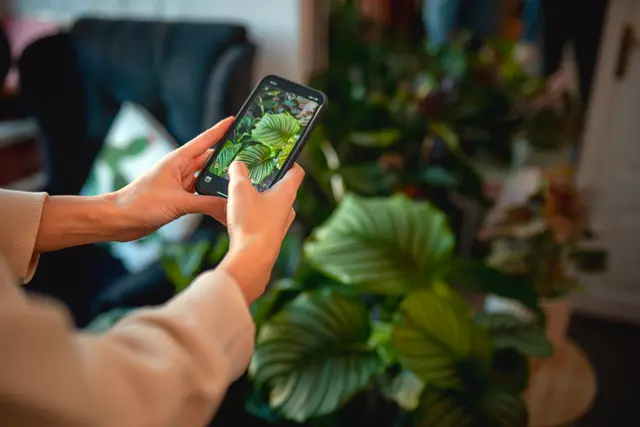Adverts
Identifying plants can be a challenging task, especially for non-experts.
Fortunately, modern technology has made this process more accessible and convenient with a variety of apps available.
Adverts
In this article, we'll explore today's best apps for identifying plants, highlighting their distinct features and functionality.

1. PlantSnap
O PlantSnap is a powerful app that uses machine learning technology to identify plants from photos. Its vast database, containing over 600,000 species, makes it a reliable choice for nature lovers and gardeners. In addition to identification, the application also provides detailed information about each plant, including characteristics, habitat and uses.
Adverts
PlantSnap stands out for its capacity for continuous learning. As more users contribute photos and information, the app's database is constantly updated, resulting in an ever-increasing accuracy rate.
Download now android It is iOS
2. PictureThis
With an intuitive interface and elegant design, PictureThis Excels at accurate plant identification. Its instant identification function provides fast results, often with impressive accuracy. Additionally, it offers an interactive forum where users can share their discoveries and get advice on growing different species.
A notable feature of the PictureThis is your extensive library of articles and guides on gardening and plant care. This means that users can not only identify plants, but also learn how to grow them in the best way possible.
See too:
Download now android It is iOS
3. iNaturalist
Although the iNaturalist While not exclusively a plant identification app, it plays a crucial role in cataloging and identifying various life forms, including plants. The active community of users and experts helps verify identifications, ensuring greater accuracy. Additionally, the app allows nature enthusiasts to contribute to science by sharing their observations.
In addition to plant identification, the iNaturalist offers a comprehensive view of biodiversity, allowing users to explore and contribute to the global understanding of nature.
Download now android It is iOS
4. Flora Incognita
O Flora Incognita is an application developed by botanical scientists, which is reflected in its accuracy and reliability. It uses advanced algorithms to analyze photos and provide detailed information about the identified plant. Additionally, it has a map function that shows the geographic distribution of the species.
O Flora Incognita it is especially effective in identifying plants native to Europe, thanks to its focus on the region and the ongoing work of European botanists.
Download now android It is iOS
5. Seek by iNaturalist
O Seek is a more simplified version of the iNaturalist app, making it especially accessible for kids and beginners. It turns plant identification into a fun activity, providing educational information and virtual rewards. The app is a great way to involve young people in exploring local flora.
Download now android It is iOS
6. Plantix
While most plant identification apps focus on natural flora, the Plantix is designed for farmers and gardeners, helping to diagnose problems in cultivated plants. It uses a combination of machine learning and the expertise of a global community of farmers to offer practical solutions to farming issues.
Download now android
7. FlowerChecker
O FlowerChecker stands out for its humane approach to plant identification. It has a team of specialized botanists who analyze the photos sent by users, ensuring exceptional precision. Although there is a cost associated with this service, the reliability and expertise of the experts are worth it.
Download now android It is iOS
4 Tips for Successful Plant Identification
- Get a clear photo: Be sure to capture a clear image of the plant you want to identify. Avoid blurry photos as this can make identification difficult.
- Photograph important details: Try to capture not just the plant as a whole, but also crucial details like leaves, flowers, fruits, and stems. This will provide valuable information for identification.
- Consider the environment: Pay attention to the environment in which the plant is located. Soil, sunlight, altitude and proximity to bodies of water can influence identification.
- Use multiple angles: Take photos of the plant from different angles so the app has a complete view of the plant. This helps improve accuracy.
Conclusion
When choosing an app to identify plants, it is important to consider the context in which it will be used. For nature enthusiasts, an app with a vast database and detailed information can be essential. On the other hand, farmers and gardeners may prefer a tool more focused on solving specific crop problems.
Regardless of the choice, each of the apps mentioned represents a notable innovation in the field of plant identification, making this activity fascinating and accessible to a wider audience. So there's no reason not to explore and celebrate the wonderful diversity of plants our planet has to offer.



